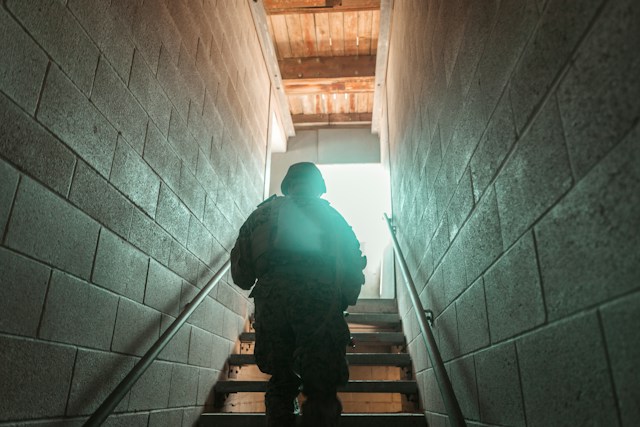From scorching deserts to the freezing tundra, modern military operations usually unfold across diverse and often inhospitable landscapes. Amidst the chaos, military shelters offer a crucial lifeline for logistics teams and military professionals, providing protection and comfort from the elements. These protective havens face a multitude of challenges and demand constant innovation and adaptation to work well no matter where they are placed.
Meeting the Challenge with Innovation
Fortunately, the field of military shelter systems is brimming with innovations, pushing the boundaries of protection and functionality. Here are some key areas where advancements are reshaping the landscape:
- Lightweight and Deployable Designs: Mobility is paramount in today’s dynamic military landscape. New materials like composites and metamaterials offer superior strength-to-weight ratios, enabling the creation of rapidly deployable and easily transportable shelters. This rapid deployment capability increases both operational flexibility and responsiveness.
- Modular Construction: Today’s military shelters are increasingly designed with modular components, allowing for quick assembly, reconfiguration and expansion based on a range of specific needs. This modularity boosts adaptability and caters to diverse operational scenarios, whether it’s a small observation post or a larger field hospital.
- Self-Sustaining Systems: Reducing reliance on external resources is non-negotiable for extended deployments, especially in remote or challenging environments. Innovations like solar panels, water purification systems and other energy-efficient technologies are making shelters more self-sufficient which minimizes many logistical burdens.
- Advanced Protection Technologies: Ballistic protection is constantly evolving, with new materials and layered systems offering enhanced resistance against projectiles and explosions. CBRN filtration systems are becoming more sophisticated, incorporating nanotechnologies for improved detection and decontamination, safeguarding individuals from a wider range of threats.
Engineering Advancements are Changing the Face of Modern Shelters
No longer simply basic, static fortifications, modern military shelters are undergoing a metamorphosis thanks to relentless engineering advancements. Designing shelters to withstand diverse threats requires cutting-edge structural techniques. Today, engineers employ complex calculations and simulations to analyze stresses, deflections and potential failure points under various loads.
The quest for lighter, stronger, and more versatile materials is a constant pursuit. From high-performance steel alloys to advanced composites and even metamaterials, material scientists are pushing the boundaries of what’s possible. These materials offer improved ballistic protection, enhanced weather resistance and reduced weight for easier deployment.
Powering and maintaining shelter functionalities involves a range of disciplines. Electrical engineers are constantly looking for new ways to integrate power generation systems, communication networks and lighting solutions. Mechanical engineers are creating robust mechanisms for deployment and climate control.
Confined spaces and extreme environments can quickly impact air quality. For the same reasons modern ventilation systems in large buildings are used to make these spaces less hazardous, improved ventilation systems are being designed in military shelters to ensure proper air circulation and prevent the buildup of stale air and harmful contaminants. These combined efforts are ensuring military shelters operate efficiently and reliably under demanding conditions.
Today’s modern shelters are increasingly incorporating IT solutions for enhanced functionality and communication. Sensor networks monitor environmental conditions and potential threats, while data management systems optimize resource allocation and provide situational awareness. This integration of IT allows for more intelligent and adaptable shelters, improving overall effectiveness.
Beyond Protection: The Human Element
It can be incredibly difficult to spend weeks or even months confined within a shelter. Ergonomic design principles have become essential, creating layouts that maximize space utilization while minimizing fatigue and musculoskeletal stress. Adjustable furniture, proper sleep stations, and designated relaxation areas greatly help promote physical comfort and mental well-being.
The Road Ahead
As the nature of warfare continues to evolve, so too must the technology behind military shelters. Research and development efforts are ongoing and are exploring possibilities like 3D-printed shelters, self-healing materials and even autonomous construction systems. The ultimate goal remains the same: to provide soldiers with the safest, most adaptable and sustainable havens possible, amidst the ever-changing realities of modern battlefields.







